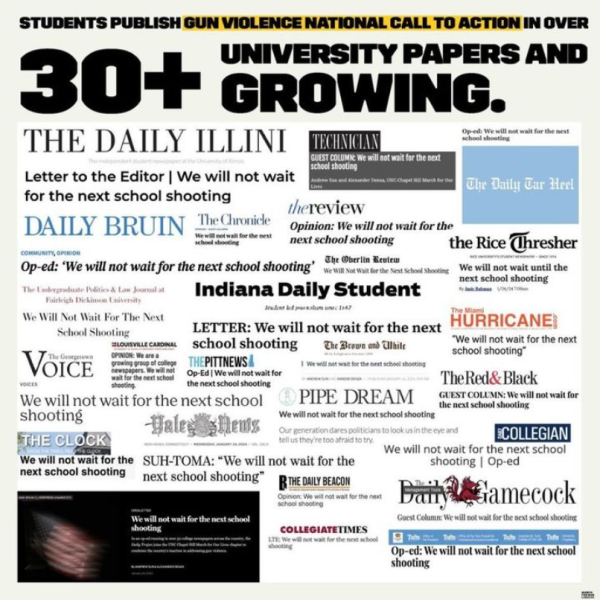Biden administration reveals new student debt relief plan
October 18, 2022
The Biden administration announced a new student debt relief plan, a step forward in helping many working- and middle-class loan borrowers repay debt. The administration hopes the program will allow borrowers to receive more aid and lower the repayment for their student loans.
The student debt relief plan will provide targeted debt relief, helping make a more manageable student loan system, and protect people who cannot complete repayment. Many borrowers have struggled with the cumulative impact of high-interest rates. The repayment plan pause was extended until December 31, 2022. Borrowers will pay 5% of their discretionary monthly income on student loans, a difference from the previous 10%, and borrowers making minimum wage will be protected from repayment and monthly interest.
Furthermore, borrowers with an annual income of $125,000 for individuals, and $250,000 for spouses or heads of households, will be eligible to receive up to $20,000 in debt cancellation for Pell Grant recipients. Non-Pell Grant recipients who fall within the same income range will be able to receive up to $10,000 in debt cancellation. These debt cancellations would not apply to privately held college loans or borrowers with FFEL or Perkins loans not held by the Department of Education by Sept. 29 of this year.
As President Biden noted in his speech to reporters, the cost of college has increased to a great extent, and federal student aid has not been able to keep up with the increase.
“The cost of education beyond high school has gone up significantly. The total cost to attend a public 4-year university has tripled – nearly tripled in 40 years – tripled,” Biden said.
The repercussions of attending college, with the addition of possibly dropping out due to the cost of attendance, are a significant burden on many students. For instance, according to an analysis by the Department of Education of a recent cohort of undergraduates, nearly one-third of borrowers have debt but no degree. With the different programs put in place by the new student relief plan, the administration plans to provide borrowers of all backgrounds with the help they need to finish repayment of their student loans.
As President Biden noted, the student debt relief plan addresses an increasingly significant problem for millions of American households.
“I believe my plan is responsible and fair. It focuses on the benefit of the middle-class and working families, it helps both current and future borrowers, and it will fix a badly broken system,” Biden said.
Although the administration has argued that there are many advantages to the new student debt relief plan, it has received blowback from critics arguing that it does not address some significant issues.
One major issue is the increased rate of tuition. Many critics argue that although the plan will address parts of the current debt crisis, it will not fix the tuition cost of post-secondary education, which has seen significant increases in tuition over the past few decades. Critics also claim that this new plan could add to the tuition cost of colleges and universities.
Additionally, several critics have argued that fairness is a significant issue in the student debt relief plan. There is room for borrowers with the potential for high-earning jobs to get debt relief when it is not necessarily needed as much as for other borrowers. Critics also argue that this is unfair to people who paid significantly less tuition for college (like at an in-state university or community college) or did not attend college.
Criticism against the plan has resulted in a lawsuit from several GOP lead states regarding the student loan forgiveness plan. A conservative think tank, the Heritage Foundation, claimed they would also file a lawsuit against the policy because it was unfair to Americans who never attended college or had already paid off their student loans. Senator Ted Cruz of Texas, a large advocate for the lawsuit, commented on how “slackers” could quickly obtain $10,000-$20,000.
“If you are that slacker barista who wasted seven years in college studying completely useless things, now has loans, and can’t get a job, Joe Biden just gave you 20 grand,” Cruz said during an interview.
These remarks received much attention and blowback, especially from current borrowers. One of the more notable responses came from Senator Bernie Sanders (D-VT).
“Senator Cruz, let me introduce to you a group of nurses and working-class Americans who, in many cases, are working two jobs and over 40 hours a week just to pay off their student debt and pay for the basic necessities of life,” Sanders said, in response to the comments made by Ted Cruz.
Although many borrowers recognize that the student debt relief plan doesn’t have a substantial long-term impact, it somewhat alleviates the current problems.
“The freeze on payments that came with Covid-19 was instrumental in me being able to actually build both a solid ‘rainy day’ and general savings balance, but the complete cancellation of debt would have made a far greater impact,” Morgan Schafer said, a 31-year-old, who has paid off $38,000 of her student loans.



